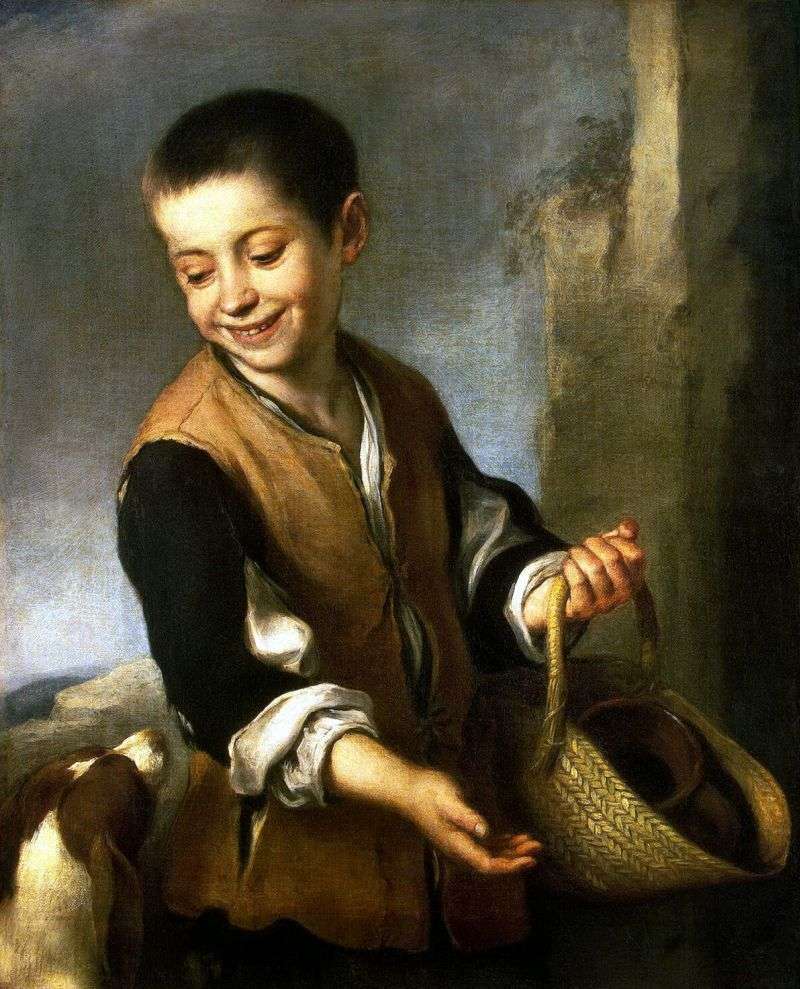
The largest painter of the Spanish art school of the second half of the XVII century. – Bartolome Esteban Murillo.
Murillo early began to study painting. His first teacher, Juan de Castillo, sought to convey to Esteban his admiration for Italian art, taught him ready-made, already frozen forms and ways of expression. But Murillo managed to understand that only what comes from life is wonderful.
In the art of Murillo, who remained loyal to the traditions of realism, there is no longer, however, the harsh restraint and spiritual strength that distinguished the work of his great predecessors. Murillo to the soft lyricism, to the graceful and contemplative images. His art is attracted by the intimacy of mood, sincerity and warmth of feeling, but on the master’s work as a whole lies a slight touch of idealization.
Like all Spanish artists of the time, Murillo painted mostly paintings on religious themes. But this did not prevent him from truthfully showing the life of the Spanish poor in the same canvases, his Madonnas were copied from ordinary seville women, the artist conveyed many religious subjects as everyday scenes. He always found his heroes on the streets of his native city.
Murillo was famous among contemporaries as a benevolent person. His canvases are also softly imbued. In the Letters on Spain, written in the last century by Russian writer and art historian V. P. Botkin, one can find such an expressive characteristic of Murillo’s painting: “In the airy brightness of light, in the transparent darkness of the shadows of Murillo, some kind of transformed poetic life breathes. Add to this special, belonging to him alone, the uncertainty of the contours that merge with the air, and the unsightly harmony of colors is a true charm. “
Murillo enjoyed universal love and respect. He was recognized as the best painter of the city. Together with friends and like-minded people, the artist founded the Academy in Seville, in which young painters and sculptors could carefully study the nature and methods of its transmission in paints, marble and bronze.
In the artist’s legacy there are genre scenes from the folk life, he carried through his life the images of the little inhabitants of Seville streets. In numerous paintings, we see them engaged in their daily activities. Their names speak for themselves: “Little traders,” “Dice,” “Poor Negro”, etc.
Such is the picture “Boy with a dog”. For the Spanish domestic genre is characterized by large-figured composition, the lack of plot action. The boy is shown accurately and lovingly. The image of the Spanish boy of the distant 17th century is close and understandable to everyone by his living truth.
Murillo does not embellish nature, but still a touch of sentimentality is captured in the image. Some dryness of execution speaks of an early artist style.
In the State Museum of Fine Arts. A. S. Pushkin is a steam room picture “Girl with fruit.”
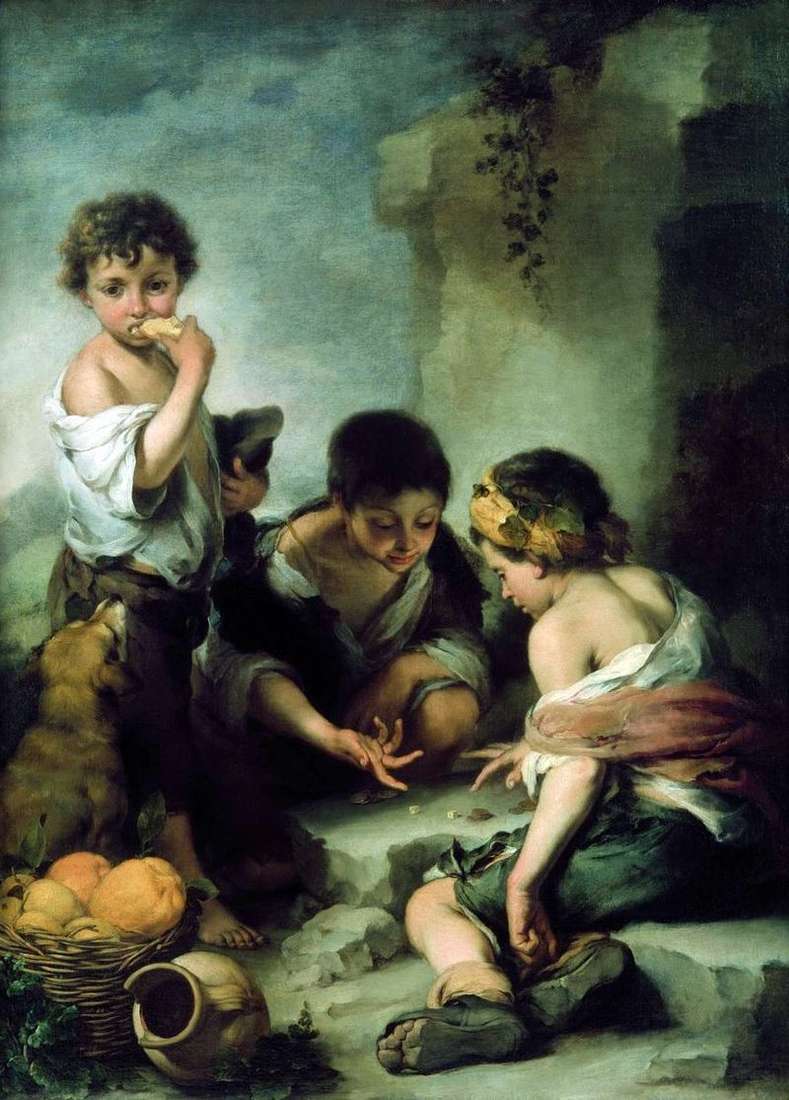 Dice Players (Street Boys) by Bartolome Esteban Murillo
Dice Players (Street Boys) by Bartolome Esteban Murillo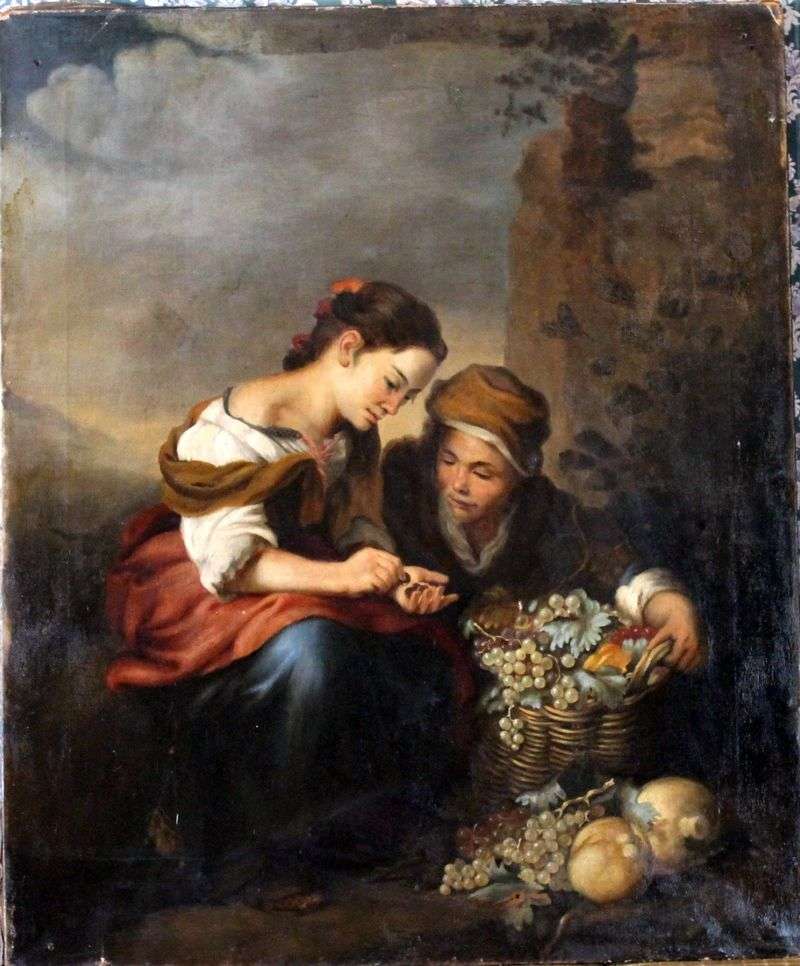 Fruit Seller by Bartolome Esteban Murillo
Fruit Seller by Bartolome Esteban Murillo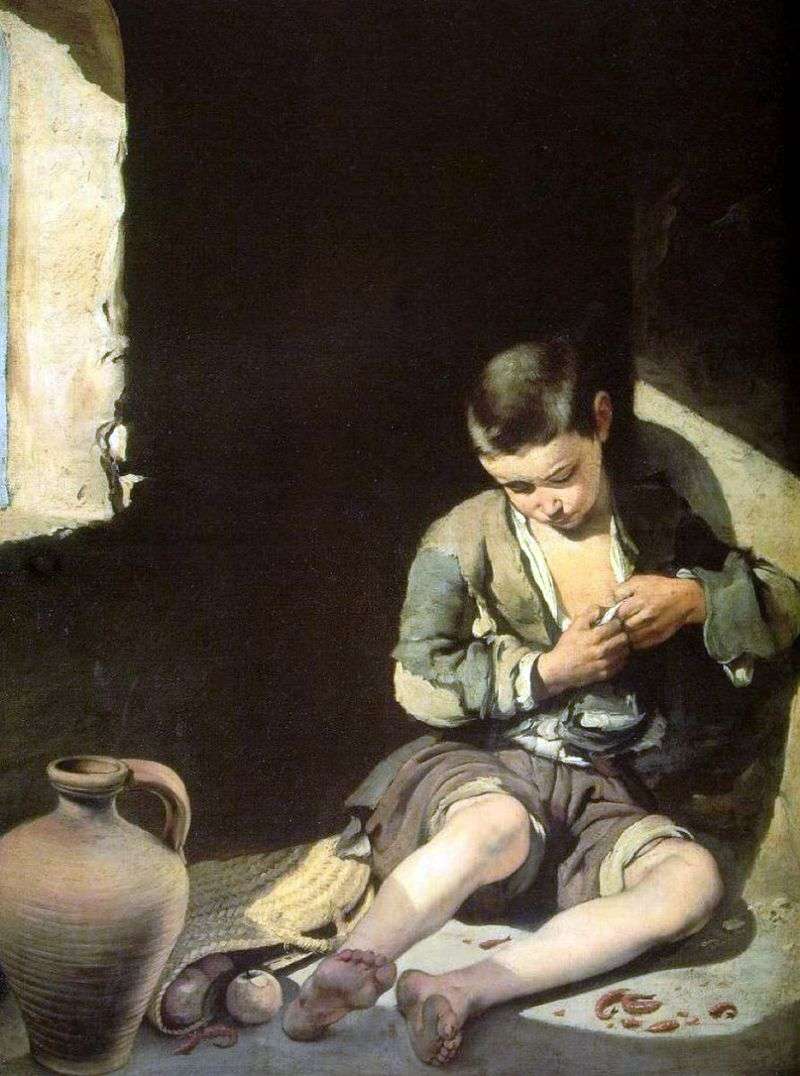 Little Beggar by Bartolome Esteban Murillo
Little Beggar by Bartolome Esteban Murillo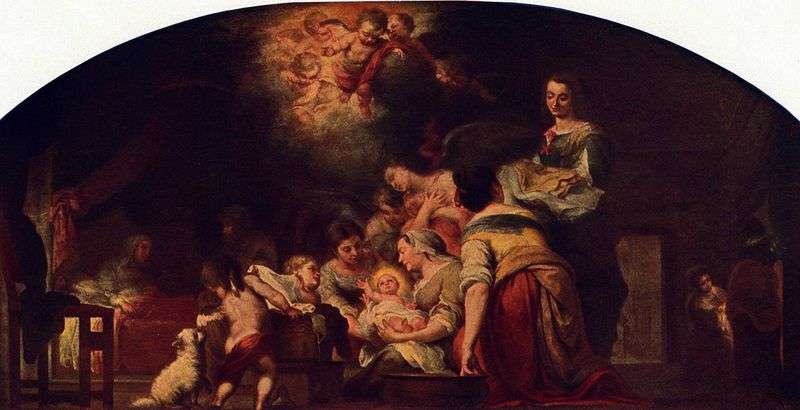 Nativity of Our Lady by Bartolome Esteban Murillo
Nativity of Our Lady by Bartolome Esteban Murillo Madonna and Child by Bartholomew-Esteban Murillo
Madonna and Child by Bartholomew-Esteban Murillo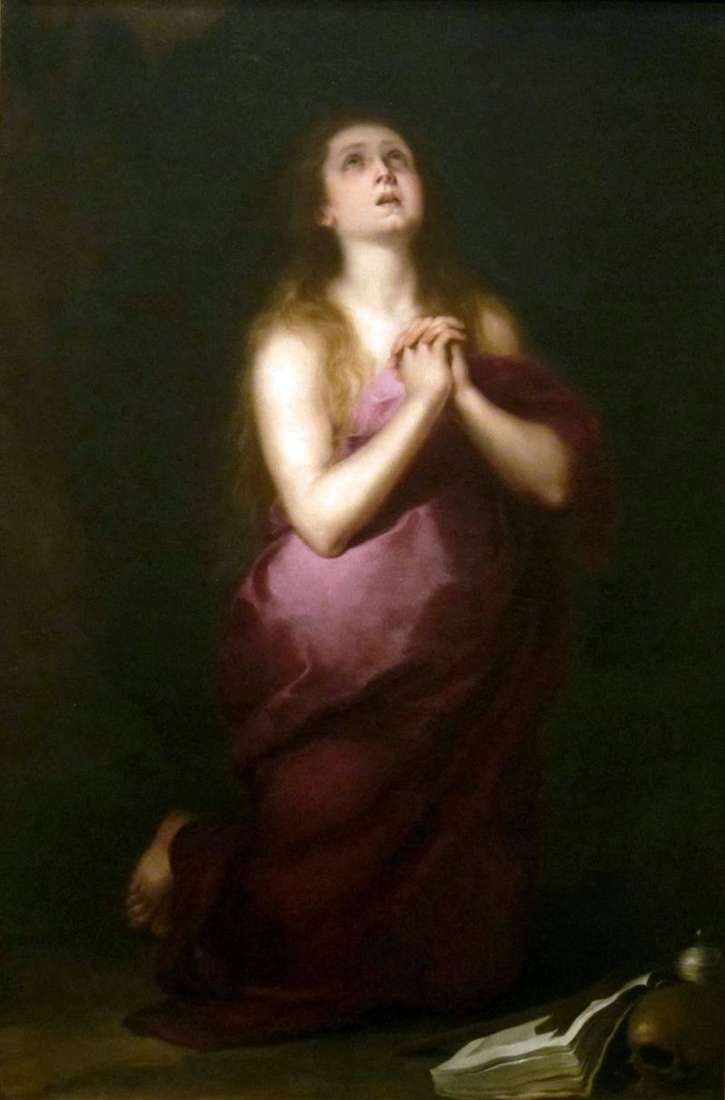 Mary Magdalene by Bartolome Esteban Murillo
Mary Magdalene by Bartolome Esteban Murillo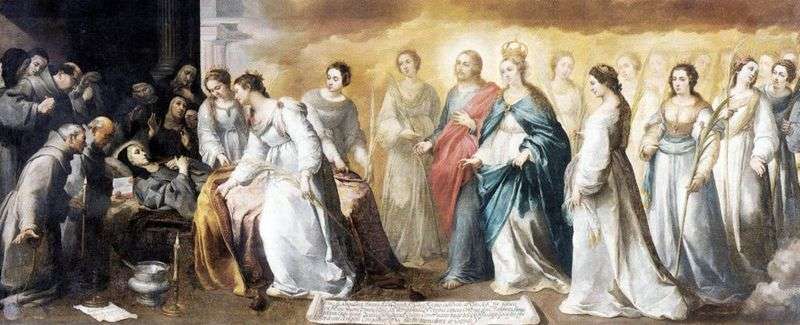 Death of Saint Clara by Bartolome Esteban Murillo
Death of Saint Clara by Bartolome Esteban Murillo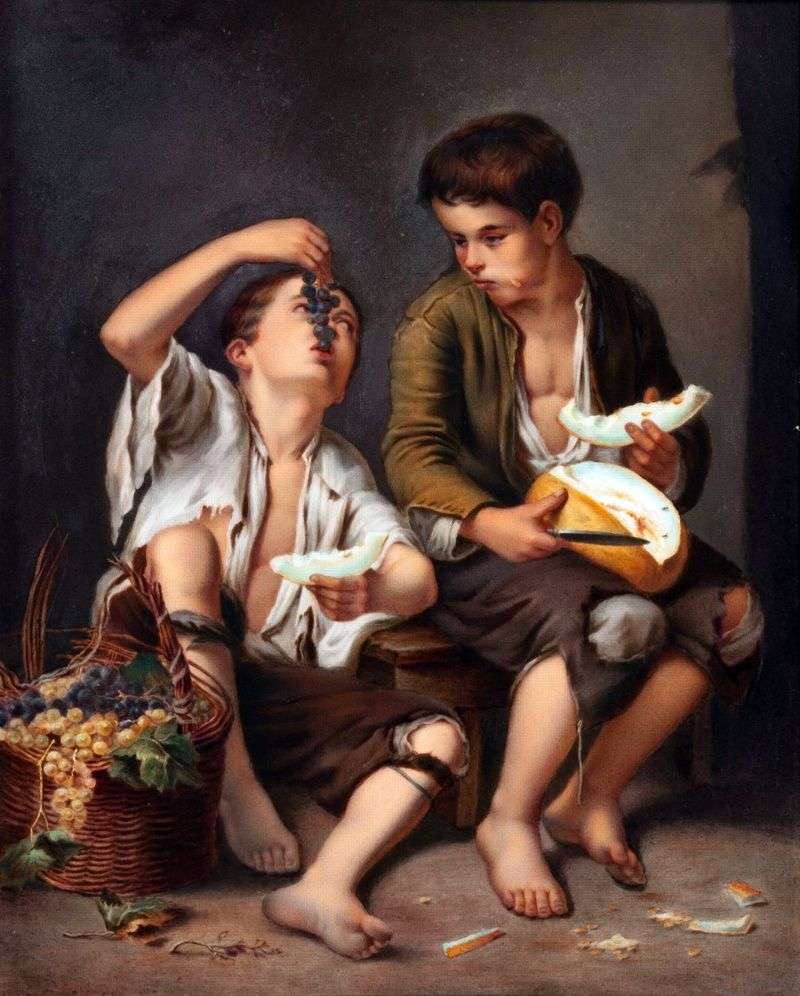 Eaters of melon and grapes by Bartolome Esteban Murillo
Eaters of melon and grapes by Bartolome Esteban Murillo